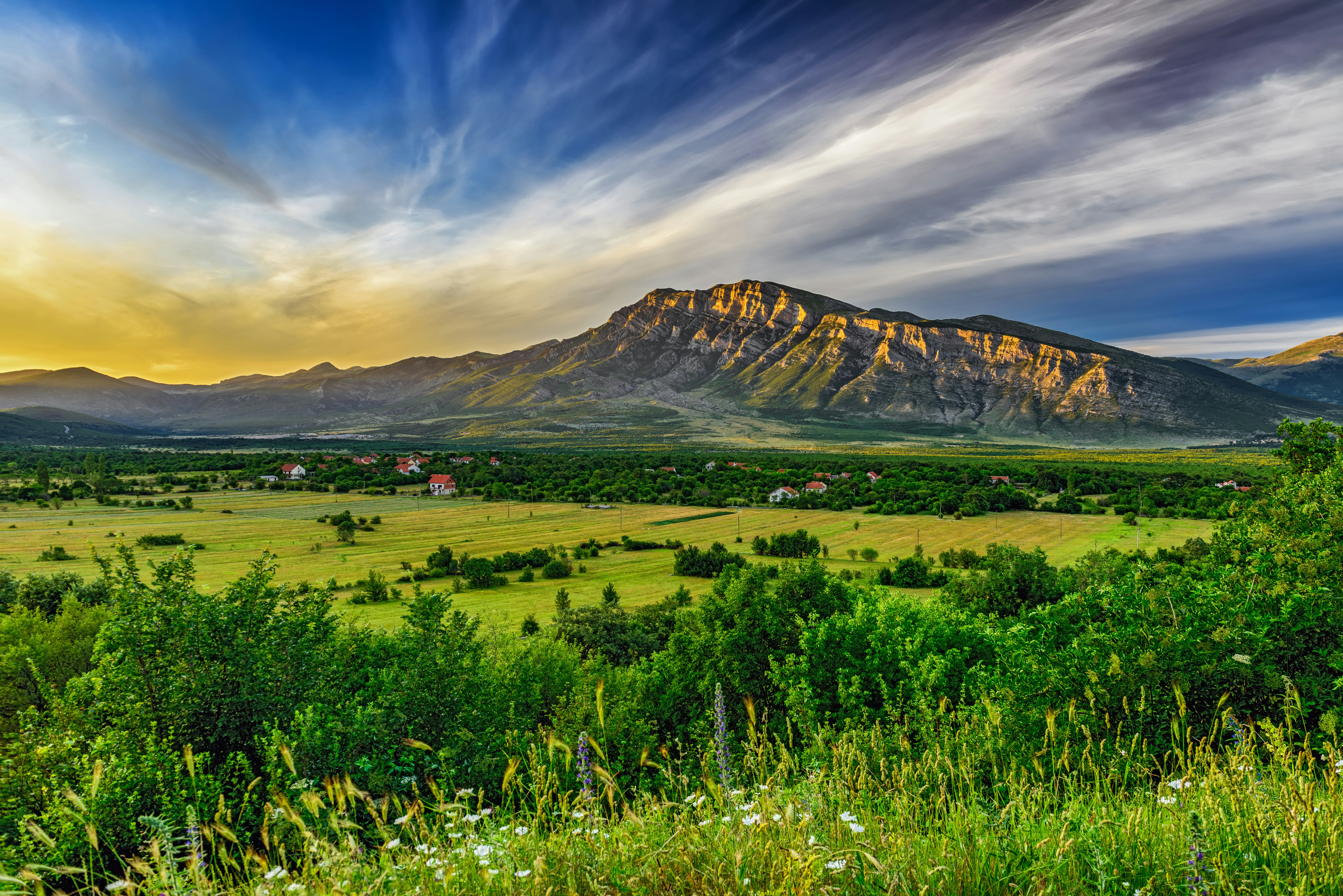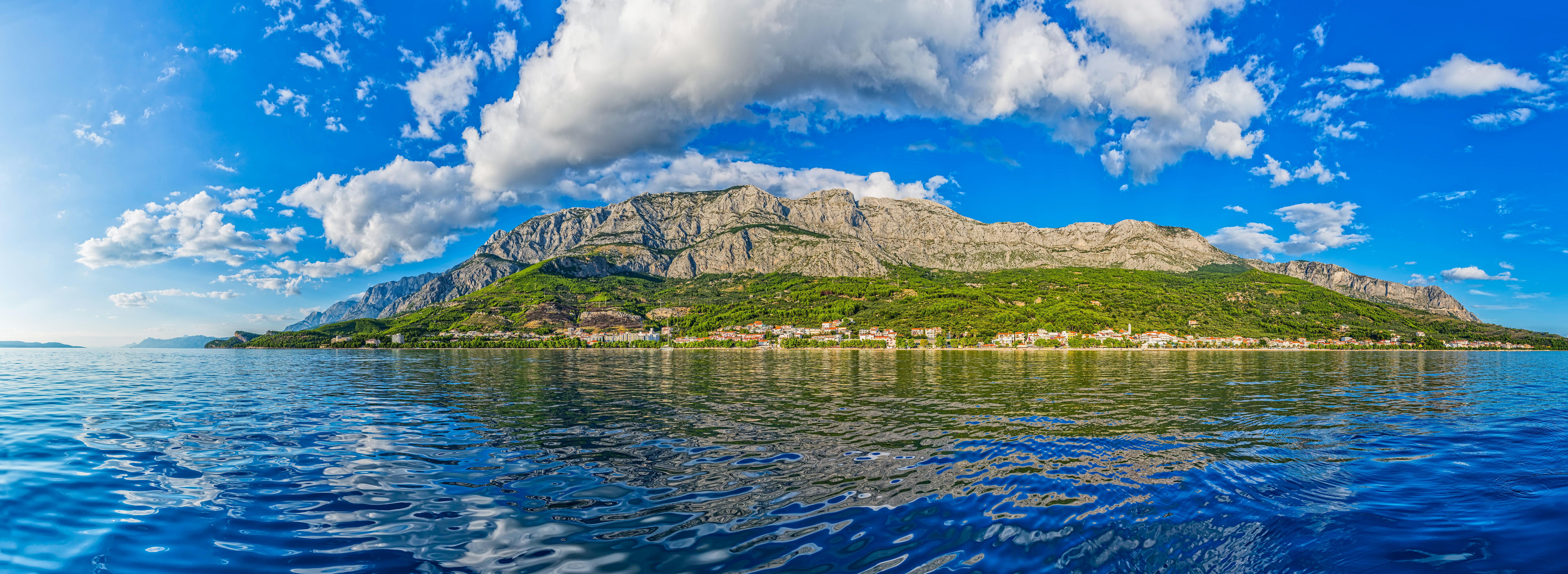Head to Croatia’s hinterland to discover its nature parks
Sponsored by

Jul 1, 2021 • 5 min read

Skakavac is a 115-foot tall waterfall in Croatia's Jankovac Forest Park.
Croatia is not all about the sea, islands and beaches. In addition to eight national parks, 12 nature parks can be found across the country's hinterland. These protected natural landscapes are reservoirs of a surprising biodiversity of flora and fauna.
For unspoiled nature, mountain highs, and a big dose of adventure, head into Croatia's interior. Nature lovers and adventure seekers will find a wonderland of scenic mountain trails, towering limestone peaks, forest paths, rumbling waterfalls, swampy marshlands, and plenty of opportunities for hiking, forest bathing, and bird watching.

Velebit Nature Park
One of the exemplifying features of Croatia's topography is the jagged limestone peaks of the Velebit mountain chain. Visible from miles away, it runs parallel to the Adriatic coastline for nearly 93 miles, separating it from the interior of the country. Stretching to almost 19 miles across at its widest point, Velebit is the largest mountain range in Croatia, and its entire area is protected as a nature park.

The Velebit mountain trail traces the entire length of the mountain chain, from the remote Northern Velebit National Park in the Lika-Karlovac Region to its highest peak at Vaganski Vrh (5765 feet), before ending in Paklenica National Park. Keen hikers can complete this demanding, 62-mile-long trek in nine days. To experience only the trail's most scenic highlights, start in Zavižan and head to Alan in its northern section (a six-hour walk), or tackle the segment that traverses Paklenica National Park in the south. Book an overnight halt at Planinarski Dom Paklenica, one of the many mountain huts dotted along the trail.
Velebit Botanical Garden in Northern Velebit National Park is perhaps the most remote botanical garden you'll ever visit, at an altitude of 4855 feet. Plan your visit in the summer to see some exquisite examples of flora unique to this mountain area- 300 different species of plants to be exact, including the alpine Edelweiss flower.
Dinara Nature Park
Mountaineering enthusiasts eager to conquer Croatia's highest summit are drawn to Dinara, the name of the mountain and its peak, rising to an altitude of 6007 feet at the edge of the border with Bosnia. From its great heights you can take in sweeping views over the dramatic peaks and valleys of this vast mountain range.

The Dinara mountain range was officially declared a nature park in February 2021, becoming Croatia's 12th, and with 155,000 acres of land, its second largest. But Dinara Nature Park is not only about peaks- visitors also have forests, grasslands, riverbeds, caves, and waterfalls to explore. This is also a playground for 20 endemic animal species, and a hotbed of flora and fauna. In fact, over 1000 species of plants grow here.
Traversing the park is the Via Dinarica, a 1199-mile long-distance hiking trail that crosses seven countries and almost the entire length of the Dinaric Alps, a massive mountain chain of limestone and dolomite extending from Italy through Slovenia, Croatia, Bosnia and Herzegovina, Serbia, Montenegro, and Kosovo, all the way to to Albania.
Biokovo Nature Park and the Biokovo Skywalk
After conquering Croatia's highest summit, move on to its second-highest mountain chain which looms high above the Makarska Riviera in between Split and Dubrovnik. Biokovo is another mountain with the status of a nature park. From its culminating point at Sveti Jure (St. George) which lies at 5780 feet, there are jaw-droppingly beautiful views to take in of Makarska, the Dalmatian coast, and the nearby islands of Hvar and Brač. On clear days, you can even see all the way to Italy!

A narrow, 14-mile-long road open to vehicles winds its way to the top, making the peak accessible to everyone. But if you prefer to sweat it out and earn the view, follow the path from the mountain hut at Vošac – from here it's a steady, four-hour climb to the summit.
Since 2020, the Biokovo Nature Park boasts a new star attraction. Next to the information center you'll find the Biokovo Skywalk: a semi-circular shaped walkway that juts out 36 feet beyond the cliff face. Standing on its clear glass floor at a height of 4028 feet, with a panoramic seascape stretching out before you is a truly exhilarating experience.

Lonjsko Polje Nature Park
Lonjsko Polje Nature Park in central Croatia covers 195 square miles of marshy swampland, making it the biggest swamp in Europe. Unsurprisingly, this is the home to over 200 species of birds, and is a big draw for avid birdwatchers.
You'll want to start your visit in Čigoć, where the ticket office and information center are located. If you're here in the spring or summer, look up to spot great white storks perching on the rooftops. The birds make the village their nesting ground until late summer when they begin their annual migration to Africa.
Hiking trails take you along wooden walkways through the vast swamplands, with educational signs along the way pointing out facts about the local flora and fauna. To get closer to the birdlife, rent a canoe to paddle your way along the canals.
Wind up your visit in the historical village of Krapje where there are well-preserved examples of traditional wooden houses with their typical pillared porches and steep pitched roofs. Some of the village homes have been converted into guesthouses and restaurants serving up home-cooked specialties, Slavonian-style.
Papuk Nature Park
If you're a fan of forest bathing, head to Papuk Nature Park in Slavonia, about 9.5 miles north of Požega. Here you can traipse through deep woods of centuries-old beech and oaks along well marked trails, passing babbling brooks, caves, and waterfalls along the way.

The park is recognized as a UNESCO Geopark, thanks to its landscape of “geological significance” made up of 600 million-year-old rock formations. Follow the sign-marked Count's Educational Trail through Jankovac Forest Park to Skakavac, a 115-foot-high waterfall tucked away deep in the woods.
This is also a biodiversity hotspot with over 1200 species of flora and fauna. Be on the lookout for wild orchids, yellow irises, and the long stems of the Hippuris vulgaris, an endangered aquatic plant. Birdwatchers, keep your eyes peeled for stock doves (Columba oenas), who like to nest here, as do collared flycatchers, goldcrests, and firecrests.
Sponsored by Croatian National Tourist Board
As a travel entertainment and inspirational media outlet, we sometimes incorporate brand sponsors into our efforts. This activity is clearly labeled across our platforms.
This story was crafted collaboratively between Croatian National Tourist Board and Lonely Planet. Both parties provided research and curated content to produce this story. We disclose when information isn’t ours.
With sponsored content, both Lonely Planet and our brand partners have specific responsibilities:
-
Brand partner
Determines the concept, provides briefing, research material, and may provide feedback.
-
Lonely Planet
We provide expertise, firsthand insights, and verify with third-party sources when needed.
Plan with a local




